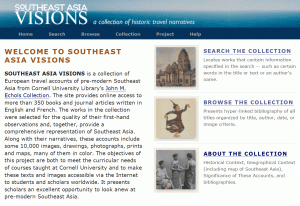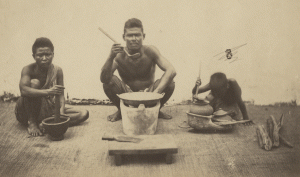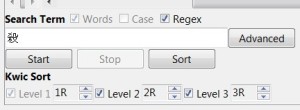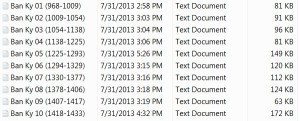One of the first papers I ever researched and wrote as a graduate student was about European perceptions of mainland Southeast Asia in the early nineteenth century. How did I research it? I went to the library and got whatever books I could find and read through them.
At that time, Mary Louise Pratt’s Imperial Eyes: Travel Writing and Transculturation had recently been published, and Edward Said’s Orientalism was still very popular. Having read and been influenced by these two books, I examined some travel accounts of mainland Southeast Asia by Western writers and sought to determine to what degree (if any) I could detect an “imperial desire” on the part of these authors to characterize the people of the region as inferior “Others” in need of “uplifting” through colonization.
Today if I was a graduate student and was going to research a paper like this I would do it somewhat differently. I would still read Imperial Eyes and whatever studies about travel writing have been written since that work was published. And I would still base my work on travel accounts written by Westerners. However, for some of my research I would look at those works in a different manner.
In particular, I would use a tool like AntConc, which I discussed in the post below and in this post on my other blog.
Several years ago some wonderful people at the Cornell University Library digitized many Western travel accounts of Southeast Asia and created a web page called “Southeast Asia Visions” where one can search, browse and read these texts.
In the time since that site was developed, many (if not all) of the texts there have been digitized by other people, and can now be found in places like archive.org. Indeed, I now prefer the archive.org versions of these titles as they are offered in various formats (read online, full text, etc.).
What is still nice about the “Southeast Asia Visions” site, however, is that it is a convenient place to see what travel accounts exist. One can, for instance, browse by time period and see which texts were published at a given time.
So if I was going to research a topic that employed travel writings, I would start at the “Southeast Asia Visions” site to determine what texts exist (they don’t claim to have digitized every travel account, but they have digitized a lot).
I would then go look for those texts on archive.org. Rather than viewing them online at this point, what I would do first is to click on the “full text” link, and to then copy and paste the text of the book in a notepad file which I would then save in ETF-8 encoding (that makes AntConc happy).
Having done that for all of the books that I want to examine (and that could be many more than I would ever have the time to actually read), I would then load them into AntConc and start searching for terms that might relate to whatever it is that I am interested in examining.
In actuality, there already is a search function at the “Southeast Asia Visions” site, however, I would still create my own corpus of texts and use AntConc to search through them as that tool is much faster and easier to use than the search function on the “Southeast Asia Visions” web site.
Finally, after having identified something interesting to examine, I would then read more deeply into the texts (yes, I think it is still important to read. . .). I could do this in AntConc (since the files I created contain the entire texts), or I could read scans of the original text online at archive.org or the “Southeast Asia Visions” site.











